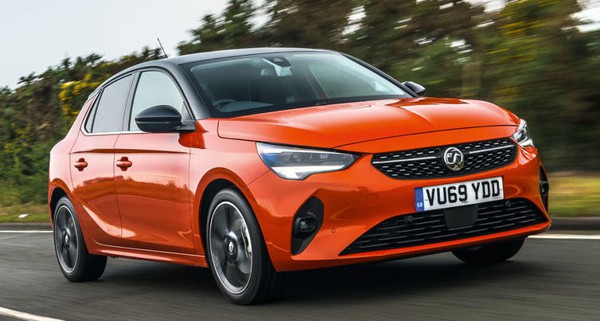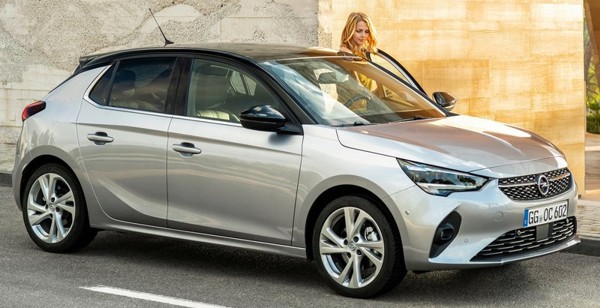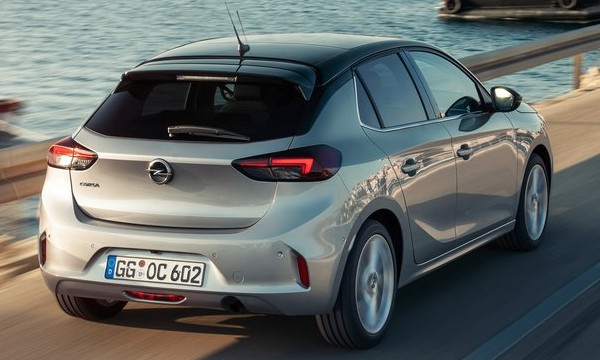Published
on 26
Feb 2020
|
All rights reserved.
|
|
|

|
|
Developed
in a little more than 2 years, the new Corsa is an achievement, but it
also shows signs of weaknesses.
|
|
This is the 6th generation
Corsa. I had never met the Mk1 that lived between 1982 and 1993 because
it was never offered here in Asia, but the second generation (born
1993) and third generation (2000) were pretty popular here. It was
probably the golden era of Opel as a global brand. Since then the
German mainstream brand started declining. In fact, Opel and Vauxhall
had never turned a profit since year 2000, and its financial woe got
worse in the last decade, so much that it decided to revamp the 4th
generation car and sold as Mk5 to deceive buyers. This means, the
outgoing Corsa was basically a 2006 design, hopelessly losing in every
comparison test. Fans, if any still left, felt disappointed. General
Motors felt the same, too, so it decided to sell its European operation
to PSA group of France. That happened in March 2017.
However, at the time the new generation Corsa had been in development
for about 3 years. Give it one more year or so and it could reach the
market. PSA chief Carlos Tavares faced a critical question: to take
over it, or to start it all over again on PSA platform? He chose the
latter option.
You can’t argue with that, since building a winner from ground up is
always more promising than succeeding a loser. If you take over the GM
car, you save development costs, but you would need to pay expensive
license fee to source GM components and technology. You also lose the
opportunity to maximize your own economy of scale. Moreover, if GM
products were so good, why did they fail? That’s why Mr. Tavares boldly
decided to scrap the development work already done and start all over
again. The new Corsa has to be derived from PSA’s Common Modular
Platform (CMP), so that it can share chassis, powertrains and
electronics with Peugeot 208 and Citroen DS3 Crossback (and the list
will grow further). The design and development would be still carried
out by Rüsselsheim, but using the existing platform and PSA’s
parts pool means their work would be largely reduced, ensuring the new
car to go from drawing board to the market in a little more than 2
years, i.e. record time in the industry.

|
|
Built
on the CMP platform of Peugeot 208, it shares the same 2-box profile,
if not the same beauty.
|
|
So here is the 6th generation Corsa. If you have already read our
review of Peugeot 208, you can go through this article in fast-forward
mode. The CMP platform is lightweight yet versatile. Its body-in-white
weighs 40 kg less than the old Corsa, while further savings are
achieved by using lighter seats (10 kg in total), engines (15 kg on
average as it skips 4-cylinder petrol) and an aluminum bonnet (2.4 kg).
Although the total saving is no where near the 108 kg claimed by its
maker (admittedly, it claimed “up to”), we still find a mid-spec. new
Corsa weighs 34 kg less than a comparable Mk5.
The CMP is also versatile that it can accommodate electric power. Not
the mild-hybrid that some makers referred to the word
“electrification”, but a full electric version. This Corsa, called
Corsa-e, shares exactly the same floorpan with Peugeot e-208. Its
50-kWh battery is integrated into floorpan under the front and rear
seats, providing a WLTP range of 330 km, just 10 km adrift of its
sister. The same front-mounted motor produces 136 hp and 192 lbft of
torque to get the car from 0-60 in 7.6 seconds, while top speed is
capped at 93 mph. All figures are so familiar.
Granted, Corsa-e does not fit into everybody’s budget. Most buyers will
choose the 1.2-liter three-cylinder gasoline engine that PSA called
PureTech. In naturally aspirated form it produces only 75 hp, while
turbocharging lifts power to either 100 hp or 130 hp, accompanied with
stronger torque than its 1-liter counterparts of Ford or Volkswagen
group. Just as in the case of 208, these 3-cylinder engines are both
gusty and refined. Pretty economical too, although they don’t rev to
the upper end as eagerly as Ford’s Ecoboost. In general, the Corsa is a
bit quicker than the equivalent 208, because it is slightly lighter (we
shall see why).

|
|
Interior is
where it should catch the most criticisms...
|
|
The 6-speed manual and Aisin-licensed, PSA-built 8-speed automatic are
again shared with 208. The former is not renowned for shift quality,
but the latter is excellent, responsive and smooth, like an ZF
8-speeder for the poor.
However, compared with Peugeot, the Corsa is not as refined. Maybe
there is less sound insulation or insufficient NVH engineering done in
the rush for market launch, you can hear more engine, transmission,
wind and tire noises in the cabin. Not just when compared with the
superbly refined 208, but it felt poorer than most other cars launched
in the last couple of years.
Equally disappointing is the interior. While the 208 has the most
attractive and expensive interior, the Corsa is on the contrary, one of
the most boring in design and the cheapest feeling. Actually, it does
not move the game on from the old Corsa, even though this is 2020. Hard
plastics are everywhere. Fit and finish is not great either. The gear
knob feels cheap. The optional digital instrument display fits into the
instrument pod about as good as an aftermarket product. Now you
understand how Opel managed to develop this car in such a short time
frame. Maybe they did that deliberately to save cost and differ from
the Peugeot, I don’t know, but the bad feeling is the same. On the plus
side, the ergonomics are right. PSA's infotainment system is certainly
a huge improvement from the old car, even though its software is not
the most intuitive. There are some short-cut keys and hardware dials
for more frequently used functions.
Compared with the old Corsa, you sit 28mm lower in the new car, but
headroom is still not great, because the roof is 48mm lower. This is
not exactly a problem up front, but rear passengers will definitely
complain about the tight headroom. Meanwhile, rear legroom is just as
average as its Peugeot sister.
 |
|
The chassis is
sportier than Peugeot but less plush. Both offer a range of good
engines.
|
|
Outside, the Corsa looks nicer. Sure, it is no where near as charming
as 208, and its front end design is undeniably characterless and
boring, but the side and rear quarter view are more stylish. It shares
the 208’s 2-box proportion, departing from the monospace design of the
last two generations. This makes it appear larger and more matured,
like a rounded version of Audi A1. The car is also remarkably sleek,
with a drag coefficient of only 0.29.
When it comes to ride and handling, the story is a mixed bag. Opel set
its suspension stiffer than that of the Peugeot, sacrificing some ride
comfort for a tighter body control. The Corsa does corners with little
body roll. It feels stable and secured, with plenty of grip. It is
certainly more agile than the old car, but you won’t confuse it with a
Fiesta or Ibiza. Like the Peugeot, its steering is very light and numb,
fails to load up as more lock is applied. Moreover, lift-off oversteer
is not an option here, so entertainment does not go beyond cornering
quickly. Meanwhile, the car lacks the plush ride of its French sibling,
especially on low-speed bumps. It might work better in Germany, but not
in the UK. BTW, Vauxhall version of the Corsa used to be specifically
tuned to deal with poor British roads. Unfortunately, in order to save
development time and cost the new car has to accept identical
suspension tuning.
Another disappointing thing is pricing. Corsa used to be sell on
bargain prices, which explain why GM Europe lost money for so many
years. Now PSA increases its price to match the equivalent Ford and
Volkswagen. For what the car accomplished in interior quality, space,
styling and refinement, the elevated prices seem overoptimistic.
|
Verdict:    |
|